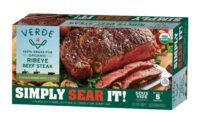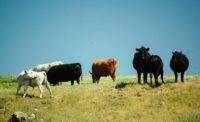Report: Grass-fed beef gains a gradual share as clean eating habits trigger demand

As health and environmental awareness intensify, the grass-fed beef market is expected to show a sustainable surge during the forecast period. The market is expected to reach US$13,369.4 Mn by the end of 2025 as consumers are being discouraged from consuming conventional meat due to excessive use of antibiotics, supplements and hormones to enhance the marbling effect. This is anticipated to boost the global grass-fed beef market at a CAGR of 4.4% between 2020 and 2025.
Beef is an integral part of the staple diet for the major population; hence its ethical procurement is a widely debated topic across the globe. With the growing awareness about sustainable living and making environment-friendly dietary choices, the grass-fed beef market is estimated to achieve a high demand.
Environmental Concerns Shift Demand from Conventional Meat to Grass-fed Beef
The global demand for grass-fed beef is being triggered by changing social habits and positive culture capital around environmental awareness. Conventional meat is primarily raised on corn feed, which demands a high amount of nitrogen fertilizer for cultivation. Use of excessive nitrogen leads to polluted waterways, which has been a heated point of debate amongst environmentalists. In light of this factor, the demand for conventional meal is gradually shifting to grass-fed beef.
Improved Taste Improves Sales
Grass-fed beef is undoubtedly better to taste as compared to conventional meat. The natural marbling effect on meat makes it juicier, which has been augmenting market growth. Aesthetically appealing and rich in nutrition, chefs across the globe as are adding steaks of grass-fed beef to their menus, generating awareness and demand for this product. Grass-fed beef is known to be high in antioxidants and conjugated linolenic acid. It also has a low calorific content, which makes it ideal for fitness-conscious eaters.
Time-consuming Rearing Process to Act as Restraint
Raise cattle that is completely grass-fed is a time-consuming process. This has been the biggest reservations in the global market. It can take up to two years to raise the animal before it can be slaughtered and processed for consumption. Raising livestock on good grass quality is also an expensive process. This percolates to the final price of the product, which has the key restraint in the global grass-fed beef market.
North and Latin America to Continue Being the Major Markets
According to Fairfield Market Research, North America and Latin America together hold a lion’s share of 71.6% in the global grass-fed beef market. These regional markets will be driven by the growing demand for environment-friendly meat products. Furthermore, high consumption of beef across Latin America and North America is also expected to fuel growth.
In the foreseeable future, Asia Pacific too is expected to witness a significant growth rate. Changing consumption patterns and high demand for frozen meat is expected to drive the demand for grass-fed beef in this regional market. Countries such as China, Australia, and Japan will remain at the forefront of this regional demand.
Key Players to Collaborate with Farmers to Maintain Steady Supply
The major key players in the grass-fed beef market include Conagra Brands, Inc, Pre Brands LLC, Hormel Foods Corporation, JBS SA, Perdue Farms, Inc, Teys Australia Pty Ltd, Meyer Natural Food, Australian Agricultural Company Limited, Verde Farms, and The Asian New Zealand Meat Company (ANZCO). Players are expected to collaborate with farmers who own land for grazing and cattle to ensure a steady supply of superior quality to feed the demand.
For more information: https://www.fairfieldmarketresearch.com/report/grass-fed-beef-market/
Source: Fairfield Market Research
Looking for a reprint of this article?
From high-res PDFs to custom plaques, order your copy today!







